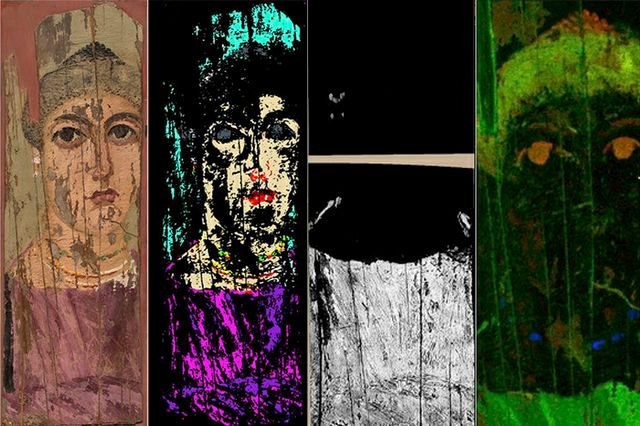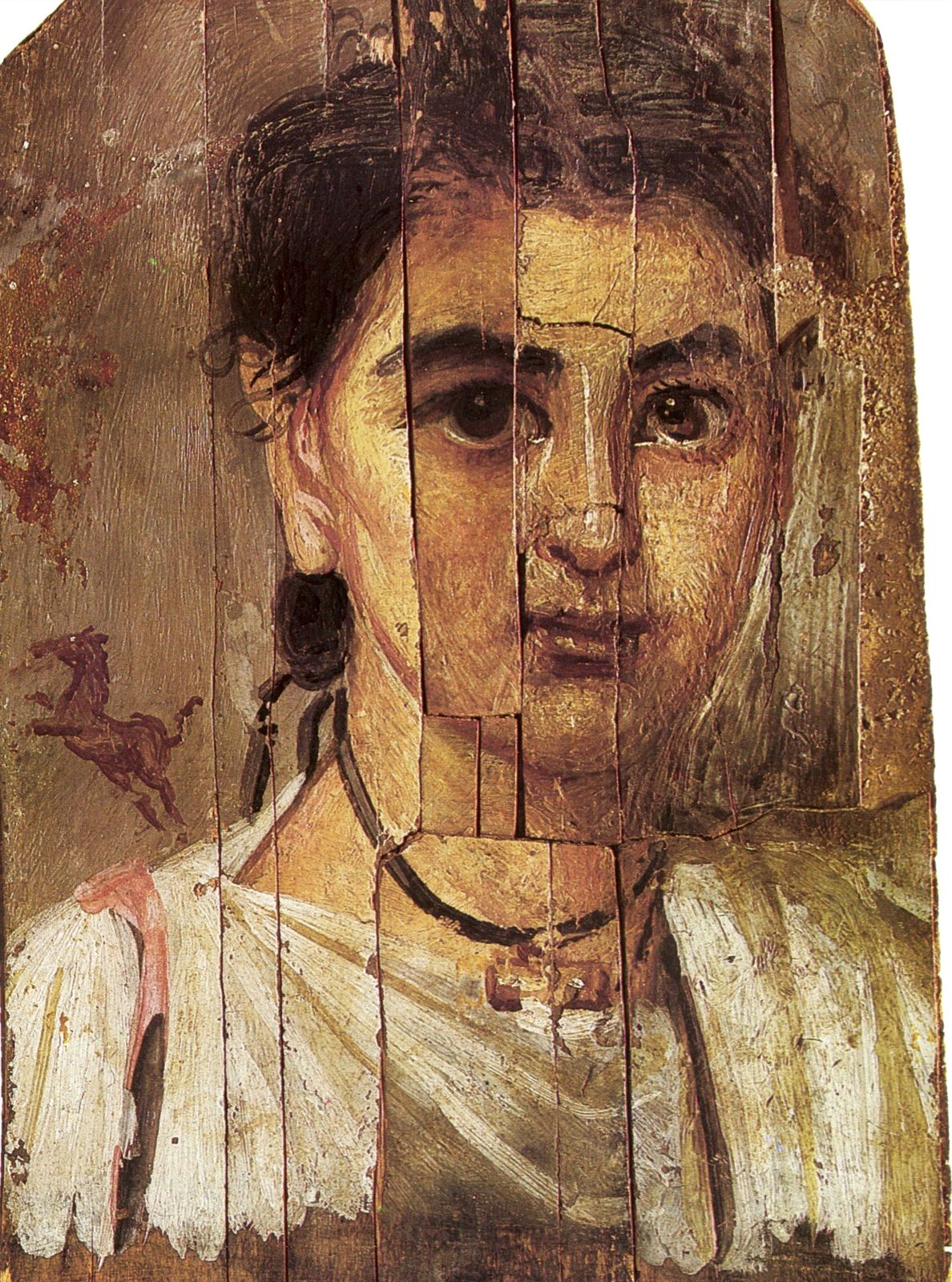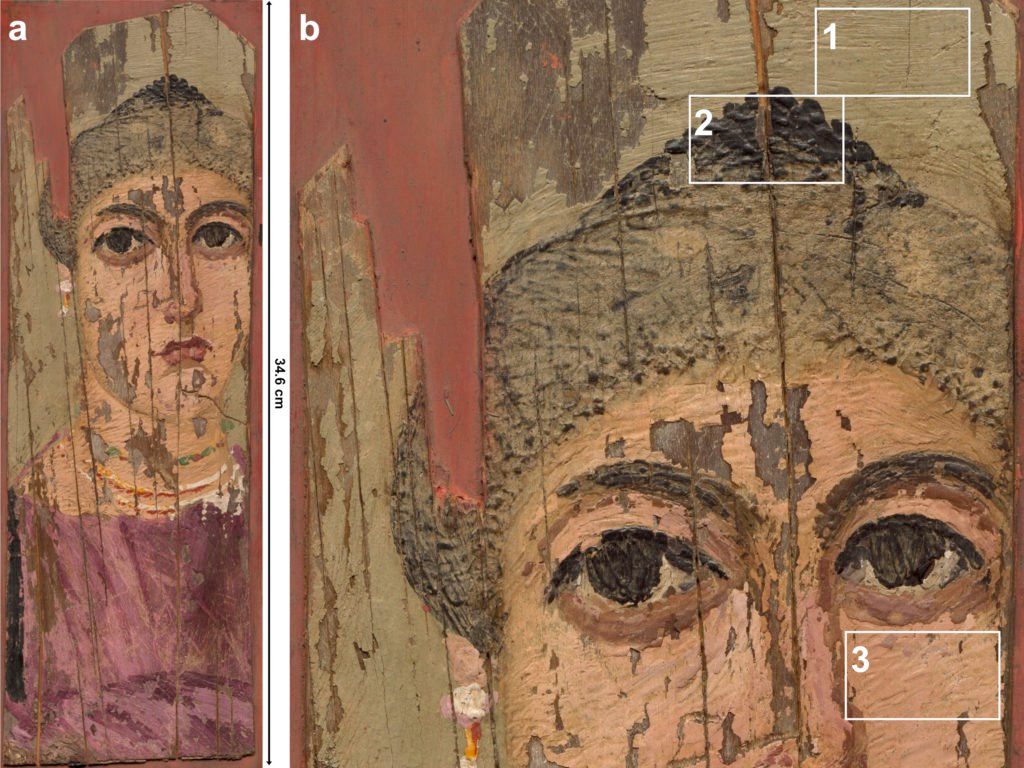The Alchemy and Artistry of Ancient Egypt’s Funerary Portraits
High-tech imaging tools are taking researchers under the paint, layer by layer.

Her rapt, black eyes gaze out, as if she’s waiting for you to ask her a question. Her hairstyle—a braid twirled and tucked at the crown of her head—hints at a noble rank, as does her purple tunic, dangling earrings, and stack of necklaces dappled with pearls and gemstones. It’s been a few millennia, so flecks of paint have sloughed off of the lifelike portrait, which was fastened to her mummified body during Egypt’s Coptic period, nearly 2,000 years ago.
Images like this one, in the collection of the National Gallery of Art, are often described as precursors to Western portraiture and have captivated researchers for years. Known as Fayum paintings, for the Egyptian site where they were excavated, they straddle both Greco-Roman and Egyptian styles. A thousand or so of these beguiling two-dimensional busts are now in museums around the world, where scientists have peppered them with queries and high-tech imaging studies.

To decode an ancient artist’s process or materials, researchers often analyze small samples they’ve scraped from a painting, which can reveal, for instance, the makeup of paints and wax and the order in which they were applied. Researchers now often try to use less-invasive, but still very thorough, approaches. Last winter, for example, a team at Northwestern enlisted a machine-learning algorithm to track brush strokes and identify the origins of various pigments on one of the paintings. Now, a team at the University of California, Los Angeles (UCLA) and the National Gallery has used a hybrid of three techniques to learn more about this painting’s composition—and the culture that produced it.
In a paper recently published in Nature Scientific Reports, the researchers describe how they used hyperspectral diffuse reflectance, luminescence, and X-ray fluorescence together, which allowed them to examine everything from minerals in the pigments to underdrawing that had been hidden in the final version. This method also helped them link artistic “production technology [and] other ancient ‘industries’ and practices, such as mining, metallurgy, pottery, dyeing, pharmacopeia and alchemy,” Ioanna Kakoulli, a materials scientist at UCLA, and one of the study’s lead authors, said in a statement.

“The decoration of [the figure’s] garment is an excellent example of craftsmanship in real life being reflected within the painting,” said UCLA graduate student and coauthor Roxanne Radpour in a statement. The Stockholm Papyrus, an alchemy compendium written in Greek in A.D. 300, holds more than 150 recipes, including a handful for mixing up batches of madder dye, which was extracted from roots and used to imbue fabrics with a purple-red hue, like the one visible on this figure’s dress. Just like it, in fact. “We see from the chemical mapping of the portrait that the artist chose to paint the noblewoman’s dress with madder lake pigment,” Radpour said. Her posthumous portrait was painted with the same variety of pigment that colored a garment she may have worn in life.
The woman’s identity and life story have slipped into the sands of time, but that doesn’t mean there still isn’t a lot to learn about her.











Follow us on Twitter to get the latest on the world's hidden wonders.
Like us on Facebook to get the latest on the world's hidden wonders.
Follow us on Twitter Like us on Facebook